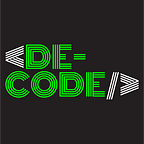This is the future: Beacon Technology!
What is IoT? Why does it matter? What is location tracking? You might know answers to all these questions if you have been following our blog. If not, follow it to stay up to date with the latest technological trends and our opinions on them. IoT is leading many changes which are not just AI or machine learning, it bridges the physical and digital and creates an ecosystem where devices can interact with each other.
What is Beacon Technology?
Google’s Project Beacon is a program in which Google sent free beacons to businesses and aimed to increase mobile visibility and experience. This year, Global Market Insights estimated that the beacon technology market is set to surpass $25 billion by 2024. Let’s start with the basics!
Beacons are small, wireless transmitters that use BLE (Bluetooth Low-Energy) technology which is a little different from traditional Bluetooth as it consumes less energy. It is the latest development in using location tracking for proximity marketing.
Proximity marketing is the localized wireless distribution of advertising content associated with a particular place. Transmissions can be received by individuals in that location who wish to receive them and have the necessary equipment to do so. Geofencing, NFC, and QR codes have been adding proximity to solutions for years.
However, Beacon Technology takes location-tracking a notch above by connecting and transmitting information to smart devices making location-based searching and interaction easier and more accurate. It gives the added benefits of high-penetration rates, long range and energy efficiency. It is the next big thing in trade.
How do Beacons work?
They comprise of a CPU, radio and batteries. The device repeatedly broadcasts signals to an identifier device. The signal is picked up by your device and marks a location in your environment.
They are mere stickers you can stick or place near an object and use BLE technology to pinpoint the location of customers in a store and deliver messages to their mobile devices.
Use Cases
Apple first introduced iBeacon technology in 2013, this new way of business might be slow at first but now it is gaining some momentum. It has its tremendous use cases in retail, hospitality, healthcare, workplaces, etc. It is hard to find an industry for which it is totally insignificant. It will help to track customers’ in-store movements, help them find their way around the stores, offer them personalised deals, provide details about the products, sending sports fans targeted discount on food and jerseys, invite them to in-store events and what not.
What’s in it for the consumers?
While it will be a benefit for trade as it offers new technology to drive sales, it will also benefit the end consumer. It is essential in the world of me-commerce. It ranges from coupons to product recommendation. It can go through the preferences of a customer and offer them personalised suggestions. It will enhance brand loyalty and brand value; if done right. If a store is too crowded and there’s no assistance, it will help in getting all the details of the products.
They will offer relevant information about products in real-time, make indoor navigation easier as it detects the precise location of your device and its proximity to a specific object and save time. You can opt in and opt out as you please.
Beacon Technology thrives on the ability to send push messages and cross the barriers of personalised marketing. It makes engagement with the consumer, effortless. It is getting adopted at a very fast rate and it will offer a personalised experience with offers.
We can expect it to take over the world in a snap, not like Thanos, and be omnipresent in every sector.
